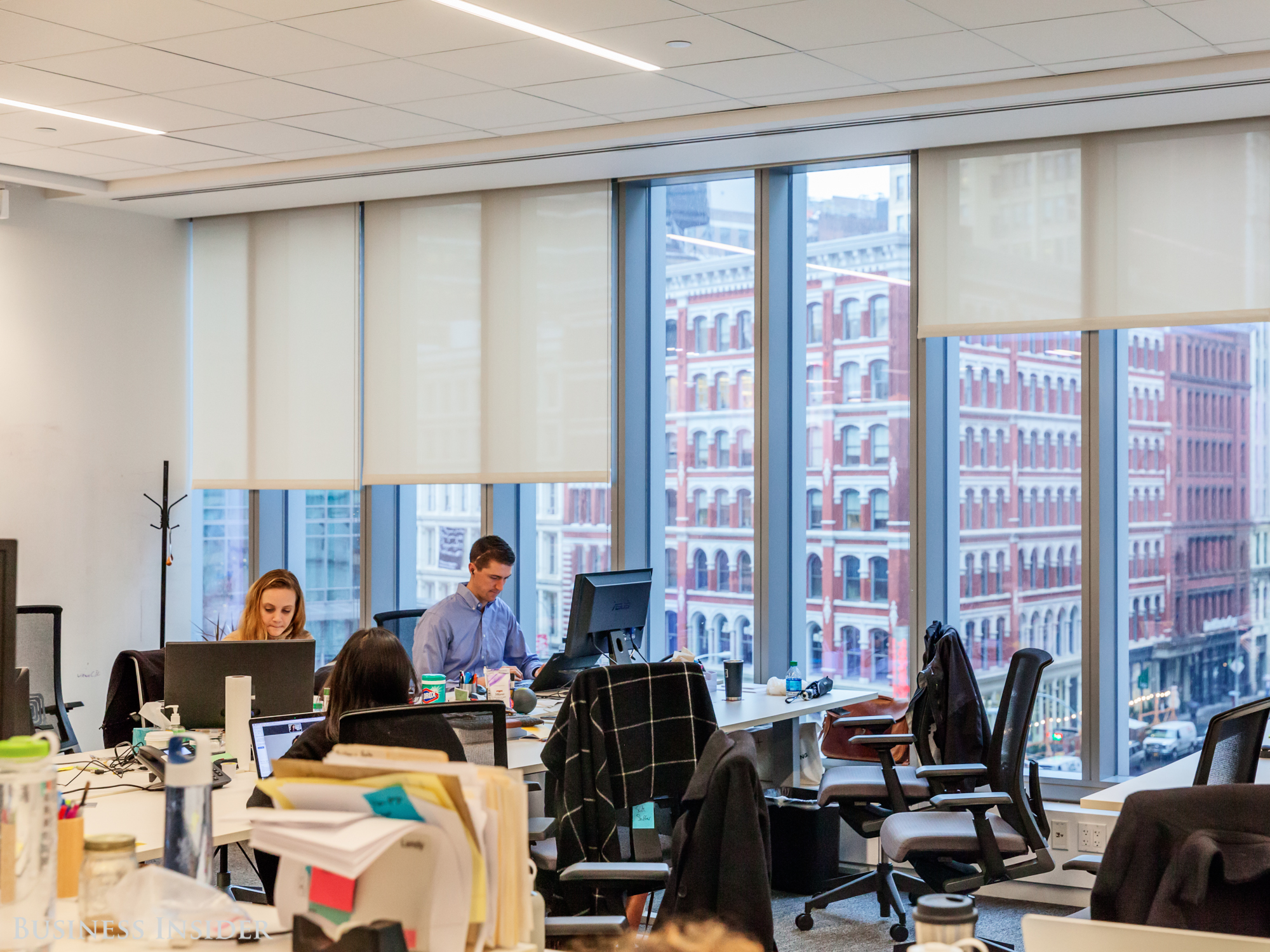In a chic Manhattan office building, around 600 people work on the future.
It’s the global headquarters of IBM Watson, the cognitive technology that the company says “can think like a human.” You may have read that it has partnered with hospitals to help better read X-rays, or watched it win on Jeopardy in 2011.
“It’s technology that is able to look at information in a manner that’s similar to us,” Watson Manager Jonas Nwuke explained to Business Insider. “It can grasp nuance and context, and learns by example over time.”
The same office is also the home of IBM’s Cloud, which focuses on cloud computing for business.
The tech giant, which was founded in 1911 and is based in Armonk, New York, is one of the world's largest employers, with almost 380,000 workers. Business Insider visited IBM's Astor Place office to see what life is like for the teams at the forefront of the company's AI and Cloud technologies.
The Astor Place workspace is open, with floor-to-ceiling windows framing employees on laptops.

Corporate communications team members Laurie Friedman and Andrea Jahanbozorgi showed us around the fourth-floor office, explaining that office's open layout allows these employees to collaborate effectively and appreciate the scope of the company.
It hums with employees at work, plugging away on teams like sales, marketing, product, and design. While Watson technically has its own team, the group works closely with the larger company, especially IBM Global Business Service, which helps other companies with their IT services.
The team has only been here since 2014. "We actually had the opportunity to fully build out the space," said IBM data and analytics tribe leader Lendy Krantz. "We really want to preserve whatever space we have on the floor for people to work."
The office's layout was created to be flexible.

The office is constantly changing, from white boards that roll around to wall off temporary meeting spaces to decor from a local graffiti office, and Krantz expects that will continue.
"Because the space is flexible, it reminds you your team is always changing, who you work with is changing," Krantz said. "It reminds you that you're always going to be working with new people, which is really good. The space reinforces that."
For a huge company, the open office has a startup vibe.

Nwuke told us that the office tends to have a fun, off-beat vibe. Nerf guns, electronic skateboards, and candy bins aren't an unusual sight around the workplace.
"There's a buzz here," Nwuke told us. "There is a good energy in this building. It feels like kind of being back in college. You're working with some folks who view the world in the same way you do, who are on the same mission you are on, and, at the end of the day, you're friends."
For instance, IBM's design research team decorated their entire workspace with colorful sticky notes.
"The idea behind giving Watson an office was so we could co-locate the teams, so you can get more of a focus on the product," Nwuke said. "You can do all the things that contemporary development requires."
The fifth floor is tricked out for visitors and clients.

There's a penthouse bar and rooftop seating with impressive views of the city streets below.
Visitors can stop by and grab a drink or take a stroll out on the roof before they head over to learn more about Watson's capabilities. We didn't venture outside into the cold rain, but we did check out the views of Astor Place.
Next door is the Watson Experience Center.

Senior client engagement leader Fredrik Tunvall took us on a quick tour of the center and launched a few demos. One presents a number of hypothetical Watson clients along a 40 foot "active wall," including executives, chefs, and physicians.
It then breaks each hypothetical client down by the data that Watson can help provide them in their professional or personal life. For instance, Watson could help a physician diagnose patients by filing through countless medical research papers or help officials monitor optimal water usage in drought-stricken areas.
"I feel like my work matters because it's part of something really big," Krantz said.
And before we left, we took a peek into the "immersion room."

Along with the "active wall," a cylindrical "Immersion Room" allows people to get a sense of how Watson's analytical abilities can be applied in the real world, displayed on 360-degree screens (we weren't allowed to photograph inside it, but it was pretty cool).
"Watson permeates whole company. It does feel very much like we are pioneers on a number of levels. Watching this industry grow over the last three years has been incredible," said Nwuke. "It's exhilarating to be out on the edges of what's going on, not just in technology broadly speaking, but within IBM."
Want to see more? Check out our office tour on Snapchat.
